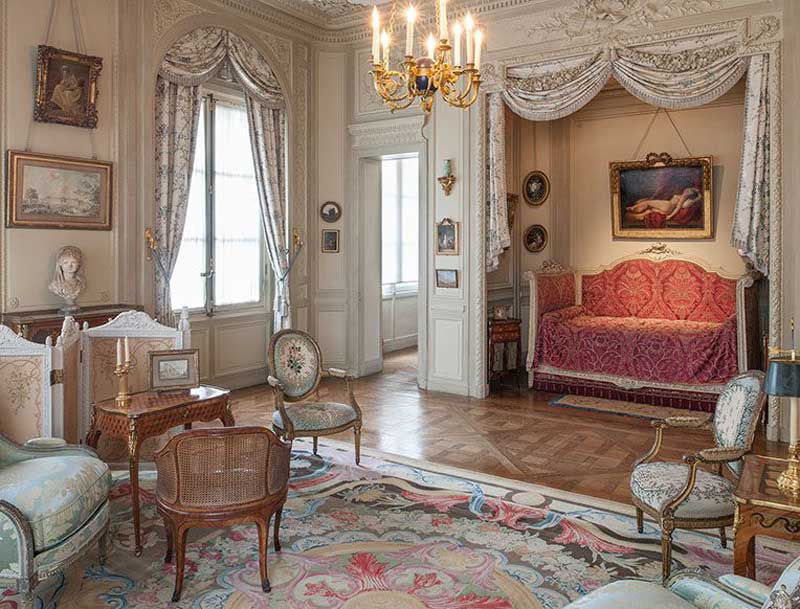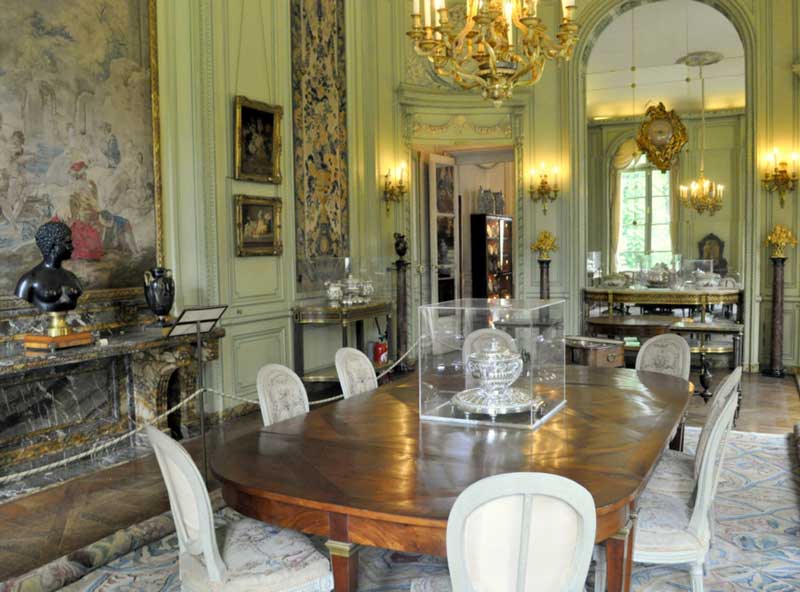
Musee Nissim de Camondo, an elegant house museum in Paris, has a tragic story behind it. Located in the Hôtel Camondo, 63, rue de Monceau, near Parc Monceau, the extraordinarily sumptuous Musee Nissim de Camondo is dedicated to a vanished world of the decorative art and furnishings of the late 18th century, mainly from the reigns of Louis XV and his doomed successor. It was created by a famous and very wealthy Parisian family, who flourished in the city during the 19th and early 20th centuries.


The Camondos, a Sephardic Jewish clan, a member of the occidental branch of European Jews initially settling in Spain and Portugal, with roots all over the Mediterranean, were a decidedly European family. Moïse de Camondo, who built the mansion, was a banker and a passionate collector of French furniture and objects d’art from 18th century France. Gradually, his passion became an obsession and with the intention to build a private mansion which would be worthy of his art collection and suitable for his family standard, he demolished the existing family mansion and hired architect René Sergent in 1911.
Modelled after the elegant decadence of Versailles, but inclusive of modern conveniences, the building was opened as a museum of the decorative art and French furniture in 1936, in honour of his son, Nissim de Camondo, who was killed in 1817, in an air battle during the World War I. In fact, after the pre mature death of his son, the heartbroken father retreated from the world and devoted the rest of his life to his passionate collection and founded the private, non-profit museum named for his son. His daughter Béatrice was always at his side to help him in his pursuit, even as he spent most of his fortune on it.

Musee Nissim de Camondo contains an impressive collection of art on display, which apart from including numerous bas-reliefs, Chinese vases, crystal chandeliers, gilt bronze clocks and wall clocks, barometers, tableware, porcelain and silver dinner services, also houses sculptures and fanciful canvases by the likes of Elisabeth Vigée-Lebrun and François-Hubert Drouais.


After the death of Moïse de Camondo in 1935, his daughter Béatrice took the helm of the family museum. Separated from her husband, she converted to Catholicism from Judaism. Despite being warned by Léon Reinach, her ex-husband, she refused to flee France during the World War II and was arrested by the Gestapo in 1942.
Along with her two children, Fanny and Bertrand, she was transported to an internment camp near the city, where her estranged husband soon joined them. Within a year, they were deported to Auschwitz Concentration Camp, from which they never returned.


Today, the Musée Nissim de Camondo is a branch of Les Arts Décoratifs. The house is maintained as if it were, preserved in its original condition, as a private home, three floors of which are open to the visitors.